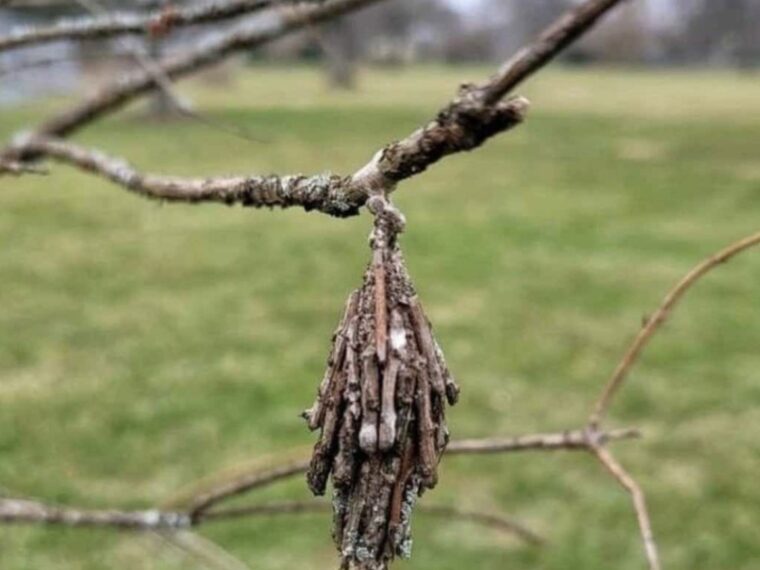Imagine stepping outside into your backyard on a peaceful summer morning. You’re ready to take in the fresh air, admire your evergreen trees, and perhaps sip on your morning coffee. But something feels wrong. As you gaze up, you notice the branches of your trees don’t look as full as they once did. There’s a lack of lush greenery, and some of the needles are missing.
As you move closer, you spot the culprits: small, brown, cone-shaped sacks hanging from the branches like ornaments. The sight of these bags is enough to make your stomach drop—these are bagworms, the silent destroyers of your evergreen trees.
But what exactly are bagworms, and how can you stop them from wreaking havoc on your beloved trees? Let’s explore the life cycle of this pest, the damage they cause, and what you can do to protect your landscape.
🐛 What Are Bagworms?
Bagworms are the larvae of a species of moth known as Thyridopteryx ephemeraeformis. Their most distinctive feature is the protective “bag” they construct around themselves as they grow. The bags are made of twigs, leaves, and other plant material, which the larvae collect and weave together. This bag acts as both a home and a shield from predators.
Bagworms attach their bags to the branches of trees and shrubs, where they feed on the foliage. They are particularly fond of evergreens, including pines, spruces, and junipers, but they can also attack deciduous trees.
🌿 The Damage They Cause
While bagworms may appear harmless at first, their feeding habits can be devastating to your trees. The larvae feed by consuming the needles and leaves, which weakens the tree and reduces its ability to photosynthesize. In severe infestations, this can lead to the death of the tree or shrub.
Some signs that your tree is under attack by bagworms include:
- Browning or thinning of branches: Bagworms prefer to feed on the inner parts of branches, leaving the outer tips looking sparse or discolored.
- Hanging bags: The most obvious sign of an infestation, bagworms’ characteristic sacs hang from branches like ornaments.
- Defoliation: Over time, the bags will strip the tree of its foliage, making it look unhealthy and stressed.
🧪 The Bagworm Lifecycle
Next page





